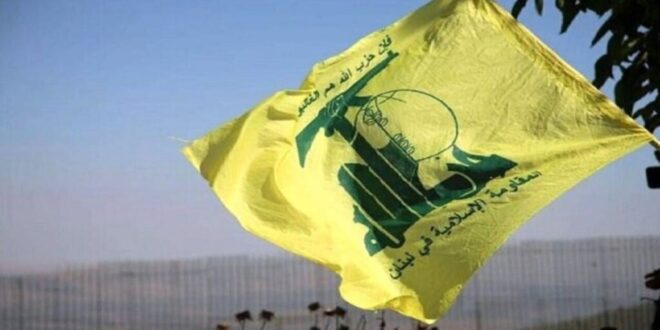In light of the significant losses suffered by Hezbollah and the escalating concerns in Tehran regarding a potentially unpredictable Israeli attack, the regime’s current strategy appears to be one of damage control. Iran believes that so long as there remains a foundation to build upon, it can eventually reestablish its influence in southern Lebanon.
To this end, the Islamic Republic seeks to cultivate an image of total warfare through a series of disparate yet calculated attacks via proxies. This approach serves not only to project strength in the eyes of its supporters but also to gamble on the possibility that the United States will exert pressure on Israel to halt its strikes against Iranian militias.
Islamic Republic President Masoud Pezeshkian and his administration recently reiterated the regime’s threat of escalation, warning of the potential for a broader regional conflict. Speaking to journalists in New York on September 23 prior to attending the United Nations General Assembly, Pezeshkian warned of “irreversible” consequences of a regional war and added that “[the Islamic Republic] will defend any group that is defending its rights and itself.” On the same day, Iranian Foreign Minister Abbas Araghchi echoed these threats and vowed to “avenge Haniyah’s death” and “defend Lebanon against Israel.” During a September 24 CNN interview, Pezeshkian again suggested that Israel’s strikes on southern Lebanon would lead to a wider conflict: “Hezbollah cannot stand alone against Israel; we must not allow Lebanon to turn into another Gaza.”
In addition to raising alarms about the ramifications of Israel’s targeting of Hezbollah in Lebanon, the other immediate tactical objective of the Iranian strategy is to reassure supporters both within Iran and across the region that it is actively taking decisive measures.
Iranian media has praised and embellished Hezbollah’s attacks in response to Israeli strikes that eliminated high-ranking Hezbollah officials. An article published on September 24 by the IRGC-affiliated Tasnim News hailed Hezbollah’s missile attacks on Israel and highlighted “the unprecedented number of rocket sirens sounded since October 7.” The Iranian Armed Forces General Staff outlet Defa Press published a piece on September 24 titled “Hezbollah’s Missiles in the Heart of Tel Aviv” that praised the terror group’s use of drones, missiles, and rockets to strike major Israeli cities like Tel Aviv and Haifa. The IRGC-funded Mehr News reported of Hezbollah’s alleged first-time deployment of the “Fadi 3” rocket against Israel.
Despite the numerous claims and threats emanating from the Islamic Republic and its proxy, Hezbollah has refrained from deploying its advanced arsenal, while Tehran has shown hesitance in becoming more directly involved in the conflict. Axios reported on September 24 that Hezbollah had urged Iran to launch an attack against Israel, a request that Tehran rejected.
Instead, the regime tapped in other proxies to cultivate the semblance of a broader regional conflict, all while avoiding direct involvement. The Iran-backed Islamic Resistance in Iraq, a designated terrorist group, targeted Israel using al-Arfad kamikaze drones, which the Israeli Defense Forces (IDF) intercepted. By using proxies, Tehran aims to reaffirm that the region will be in chaos unless Jerusalem refrains from retaliating against Hezbollah.
Iran’s strategy also seeks to capitalize on the ongoing international pressure against Israel to exasperate the threat of a possible all-out regional war. On September 23, the foreign ministers of the Group of Seven cautioned that the Israeli-Hezbollah conflict could escalate into a wider conflict: “Actions and counter-reactions risk magnifying this dangerous spiral of violence and dragging the entire Middle East into a broader regional conflict with unimaginable consequences.” Similarly, United Nations Secretary-General Antonio Guterres raised alarms about the “escalating situation along the Blue Line,” referring to the demarcation line dividing Lebanon from Israel and the Golan Heights.
The Islamic Republic’s hesitance to launch strikes against Israel from Iranian territory stems from two main concerns: a fear of American intervention on behalf of Israel and the possibility of an unpredictable retaliatory attack, akin to the waves of assaults that targeted Hezbollah’s communication systems.
Regarding the former, the Pentagon reiterated its support for Israel on September 23. Secretary of Defense Lloyd J. Austin “reaffirmed the United States’ commitment to Israel’s right to defend itself following a series of rocket attacks by Lebanese Hezbollah” during phone conversations with Israeli officials. Furthermore, the United States is also deploying additional troops to the region in response to the drastic escalations between Israel and Iranian proxies. The two attack waves on Hezbollah’s pagers and radio systems also caused panic among officials in Tehran, contributing to Iran’s fear of directly targeting Israel from its soil.
Reuters reported on September 23 that the Islamic Revolutionary Guard Corps has banned the use of all communication devices and is also allegedly investigating its personnel to expose possible ties to the Mossad. A day prior, the regime-affiliated Defa Press claimed that Iranian security personnel had arrested 12 people allegedly “working on behalf of the Zionist regime to conduct anti-security measures across 6 provinces.”
 Eurasia Press & News
Eurasia Press & News



